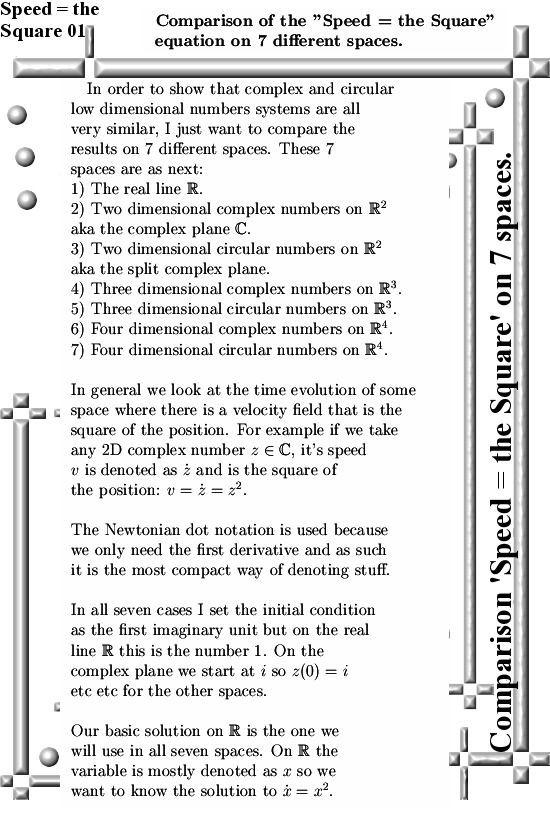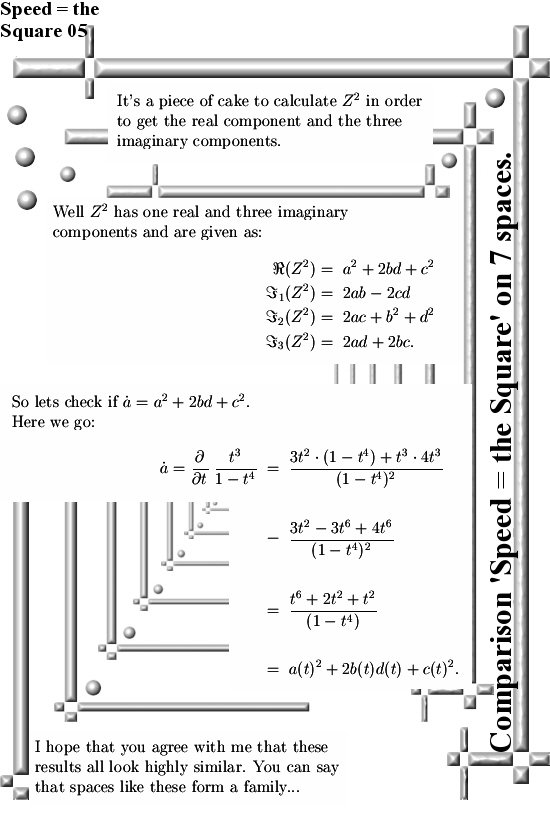This post is very simlilar to a few back when we calculated the results on 4 different spaces. This time I hardly pen down any calculation but only give the results so we can compare them a little bit.
The way most professional math professors tell the story of complex numbers it goes a bit like this: We have the real number line, the complex plane and on top of that a genius named Hamilton found the quaternions. On top of that there are a bunch of so called Clifford algebra’s and oh we math professors are just so good. There is no comparison to us, we are the smartest professionals in the world!
Well that is very interesting because it is well known these so called ‘professionals’ could not find the 3D complex numbers for about 150 years. So how come they all say we have this and that (complex plane and quaternions) and that’s enough, we are just perfect! Why they keep on saying rubbish like that is the so called Dunning-Kruger effect. That’s something from psychology and it says that people who lack understanding of some complicated stuff also lack the insight that they are stupid to the bone when it comes to that particular complicated stuff. So the views of professional math professors is very interesting but can be neglected one 100 percent, it’s just Dunning-Kruger effect…
If you look at the seven results of the ‘Speed = the Square’ equations, the solutions form a strickt pattern that only depends of the number of dimensions and if it is the complex or the circular multiplication. So every time a math professor goes from the complex plane to the wonderful world of quaternions you now know you are listening to a weirdo.
I said I only give results but since I have never ever introduced the 4D circular numbers I just extrapolated the other six spaces to the solution that lives in that beautiful space. So the last example is a bit longer.
Anyway although the math depth of this post is not that very deep (solving a differential equation that wants the derivative to be the square of what you differentiate), it clearly demonstrates solutions of all 7 different spaces look strikingly similar.
But because of the Dunning-Kruger effect likely the math professors will keep on telling total crap when it comes to complex numbers. Why am I wasting my time on explaining math professor behaviour? Better go to the five pictures of our post. Here we go & bye bye math professors.





May be I should write some posts about general complex number theory on spaces of arbitrary dimension. On the other hand I found the 3D complex numbers back in the year 1990. So if after all those years I will once more try to write some general theory one thing will be clear: Math professors will keep on trying to convince you of the beauty of quaternions or that garbage from the Clifford algebra’s.
Why, as a society, do we keep on wating tax payer money on math professors? Ok, they do not everything wrong but all in all it is not a great science or so where the participants are capable of weeding the faults out and grow more of the good stuff.
Let me end this post and thank you for your attention.